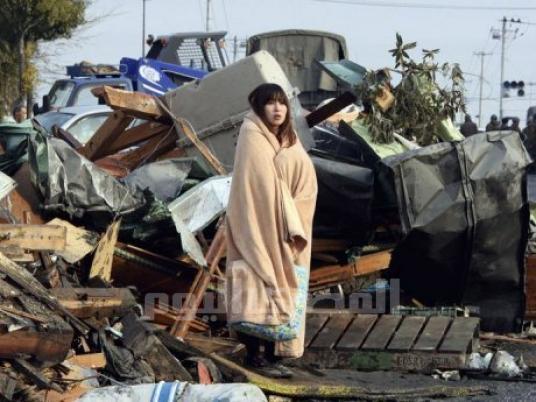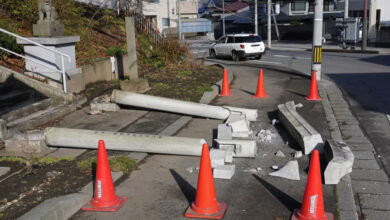
A year ago, a desperate young mother stood amid the ruins of her devastated city wrapped in a blanket as she scoured tsunami wreckage for her missing son.
Twelve months on, Yuko Sugimoto and her family are reunited and living in a temporary home, but the scars from the catastrophe still remain.
"The disaster made me realize it's a miracle that tomorrow comes," she said after re-visiting the spot where a photographer captured her despair after her life had been turned upside down by the ferocious waves of 11 March 2011.
The result was a heart-rending image of Japan's earthquake and tsunami that was published by newspapers, magazines and websites around the world.
Sugimoto recalled how two days after the tsunami she cowered against the bitter cold as she searched for any clue to the whereabouts of her only child.
"I became more and more anxious," she said. "I kept asking myself if he was alive or dead."
The 29-year-old was at work and 5-year-old Raito was at his kindergarten when the sea came crashing into Ishinomaki.
Roads were destroyed and buildings were smashed, blocking the route to the partially-submerged nursery where she had taken her son that morning.
Rumors spread that the children had all been washed away — that none would be found alive.
For three days she and her husband traipsed from shelter to shelter, hoping against hope for a miracle.
Then on 14 March, their prayers were answered.
"Tears blurred my eyes. I couldn't see my son's face, I was totally speechless," Sugimoto told AFP. "When I was able to focus again, he was in his father's arms."
"I had taken it for granted before the disaster that I have my family and that tomorrow will come just like today," she said. "But it's actually a miracle. We should make the most of every single day."
She later learned the 11 children who stayed at the kindergarten when the alarm was raised had narrowly escaped the tsunami by climbing onto the roof.
They shivered there in the falling snow until 2 am when the waters receded enough for them to go down to the second floor of the swamped building and await a boat rescue the following morning.
Sugimoto knows that despite losing their home and nearly everything they owned, she and her family are among the lucky ones.
More than 19,000 people were killed by the tsunami as it tore into the once-picturesque coast of northeast Japan. A sixth of those who died have never been found.
The family is now one of tens of thousands living in temporary accommodation provided by the local government as they ponder how to put their lives back together.
To the outside world Raito appears to be coping with his new life, says his mother. But the disaster has affected the little boy.
She says whenever there were tsunami warnings in the weeks after the disaster, Raito would be sick and he is still very much afraid of the dark.
"You cannot tell it by looking at him, but I believe the disaster has left a scar on him," she said.




